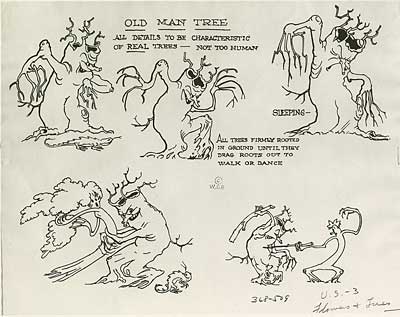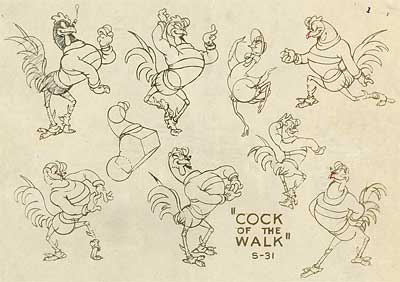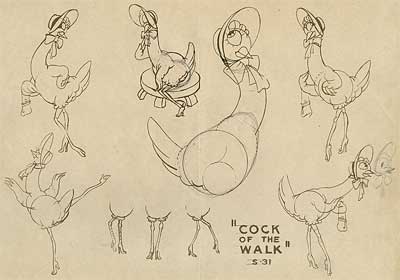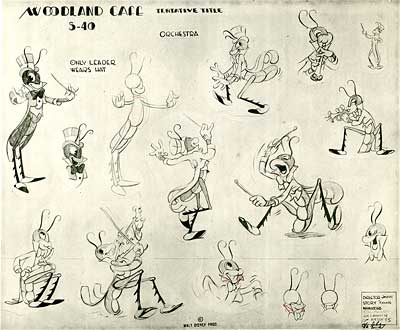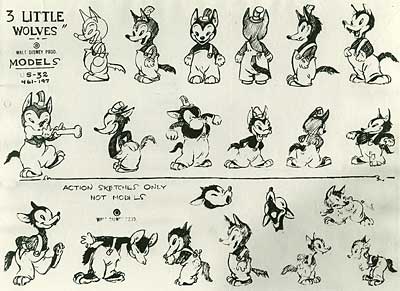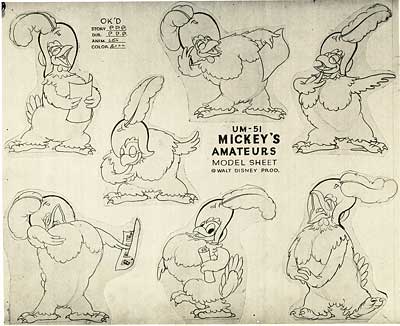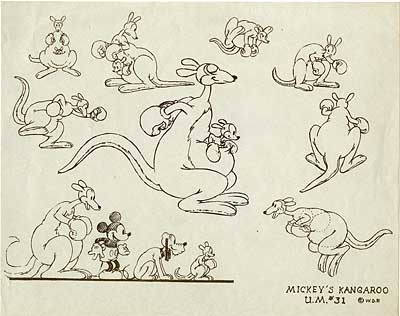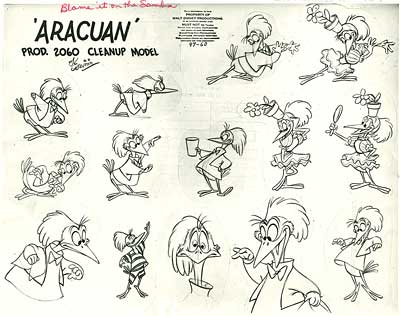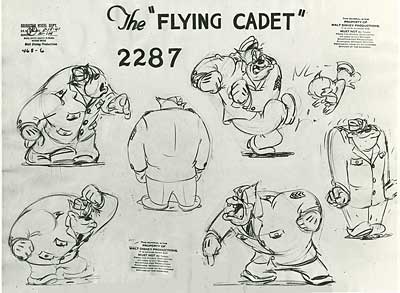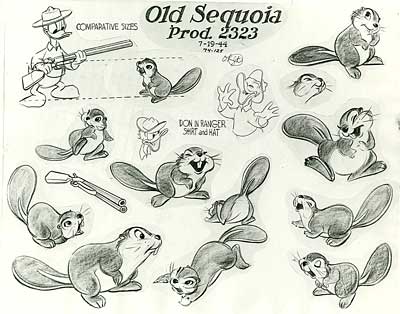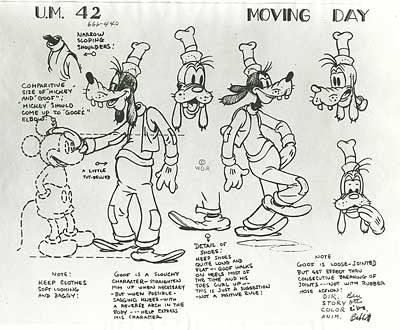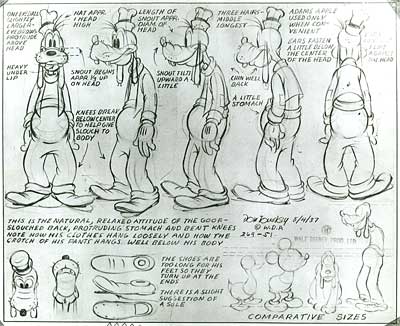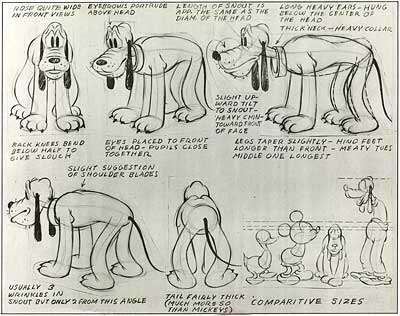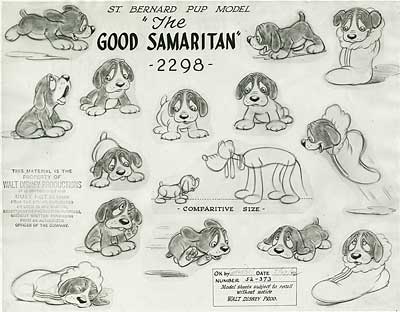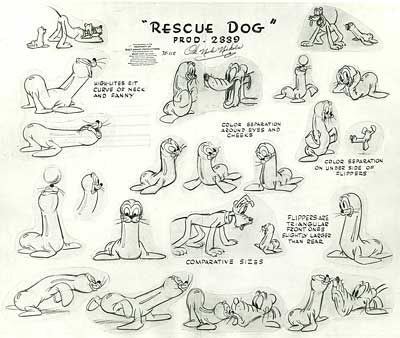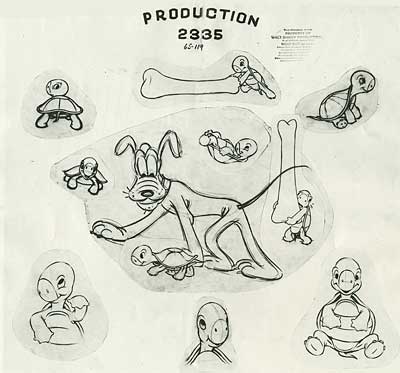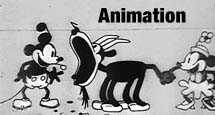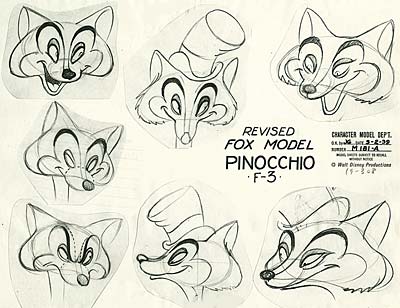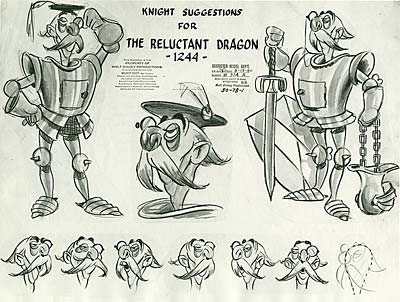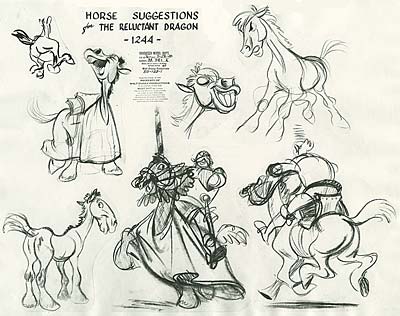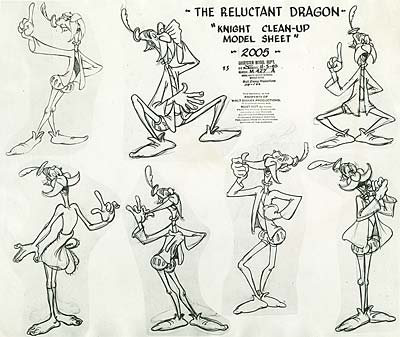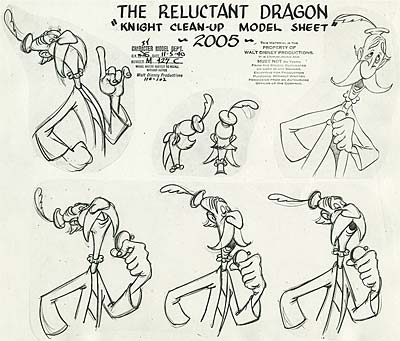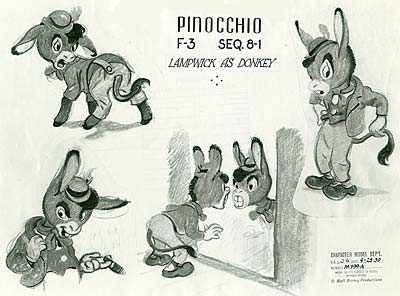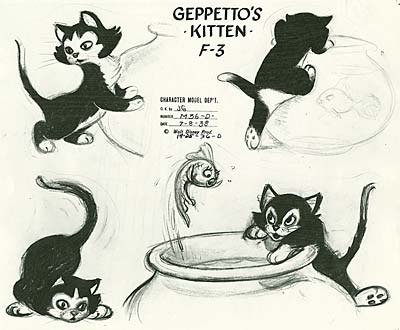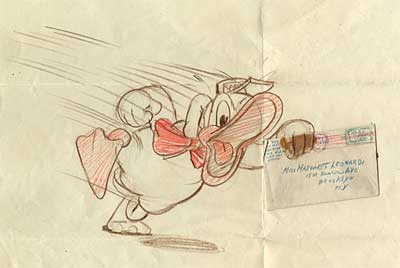
Not long ago, archive assistant Amir Avni and I took a trip out to visit Carlo Vinci’s family at the home of his wife, Margaret. Mrs. Vinci graciously welcomed us into her home for a tour of her collection of artwork belonging to her late husband. Carlo’s animation desk, which he designed and built himself, still stands in his office just as he left it, with caricatures by co-workers hanging above it on the wall. Every room in the house has beautiful artwork filling the space. It was an awe inspiring experience to get a chance to see it all.
Carlo Vinci was a remarkable artist. He received classical art training at the National Academy of Design in 1930. He joined Paul Terry’s Terry-Toons soon after, and worked there for twenty years. He came West to join Joe Barbera at MGM, and ended up as the lead animator at H-B for twenty more years. But as I learned at my visit, those great achievements were only a small part of his story. In addition to cartooning, Vinci was an all-around fine artist, adept at oil painting, watercolor, illustration, stained glass and sculpture… in a variety of styles, from classical to baroque to art deco… with a wide range of subjects- still lifes, portraiture, landscapes and religious subjects. It was a mind blowing experience to discover the depth of talent behind a cartoonist we thought we already knew.
After we had viewed all the amazing artwork, Mrs. Vinci invited us to enjoy some home made Italian desserts with her family. Excited by everything we had seen, we had plenty of questions about Carlo and his wonderful career as an artist. We asked if she had met him before he started working for Terry-Toons or after, and she replied, "He was working for Mr. Terry when I met him. When we were courting, he lived in the Bronx, and I lived in Brooklyn. It was a long trip across town to meet for our date every Wednesday evening. Carlo would send me a little note with a cartoon every day in the mail when we couldn’t be together. I’ve saved them all these years, but I don’t suppose you would be interested in seeing them…"
Naturally, we were! Her son, Paul Vinci helped her to retrieve the hundreds of letters from a closet- all on Terry animation paper in envelopes with the distinctive Terry-Toons logo. Dating from 1938 to 1939, these charming little notes had a personal message, along with brilliant drawings depicting Terry characters. Paul commented that he himself hadn’t seen the letters since he was very small; and even then, his mother only shared one or two with him. They had been bundled away carefully for over fifty years. Mrs. Vinci has kindly allowed us to share these drawings with you…
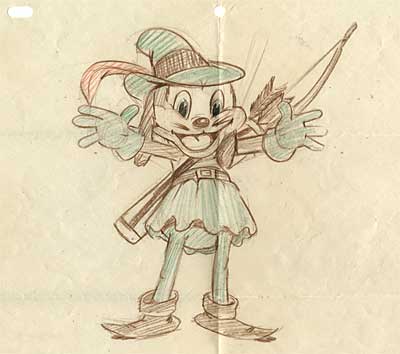
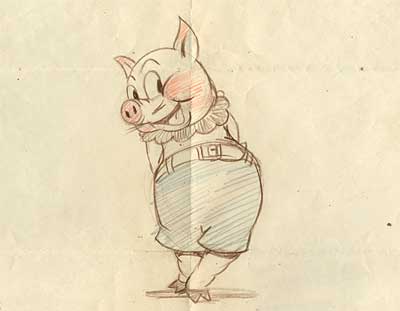
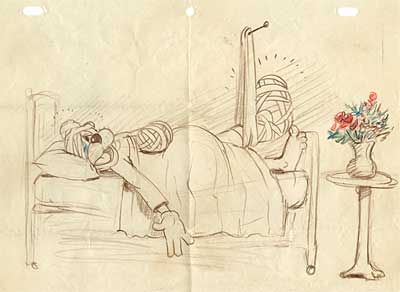
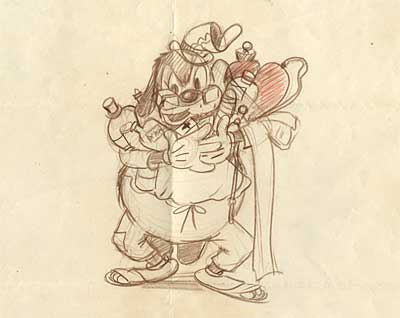
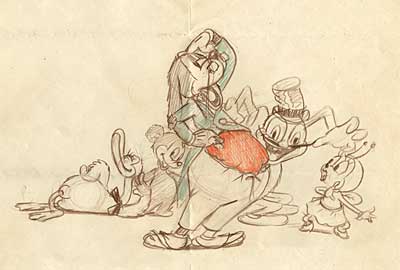
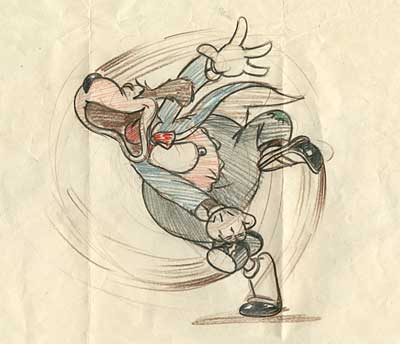
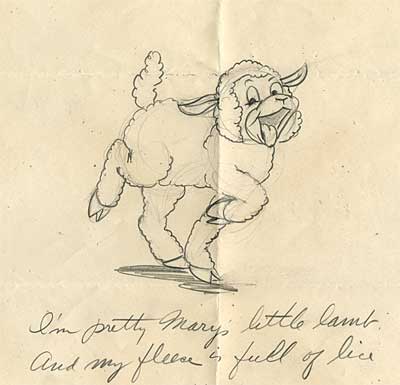
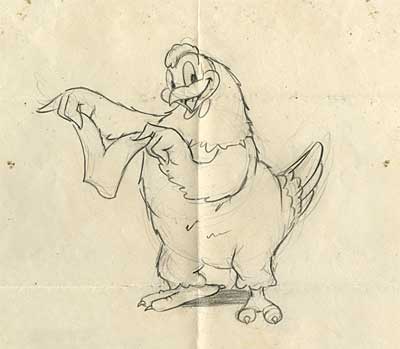
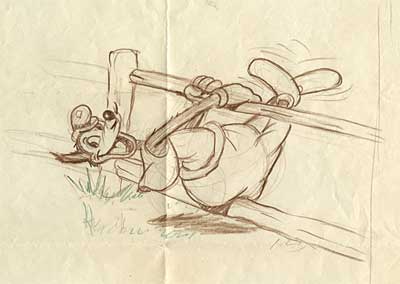
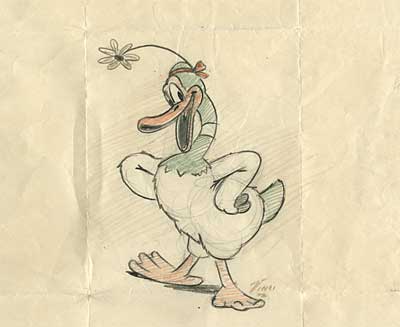
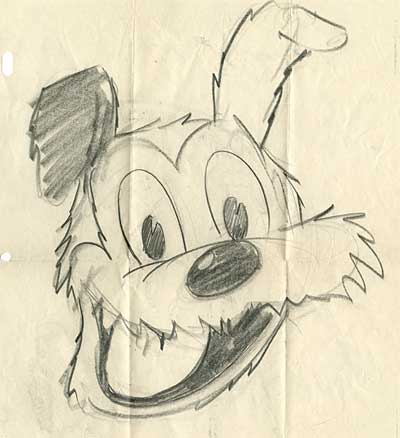
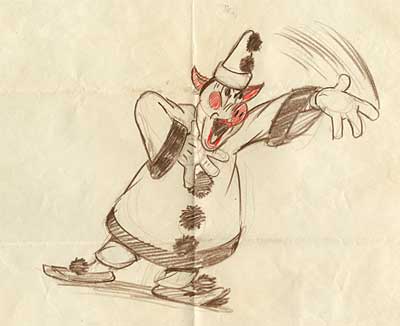
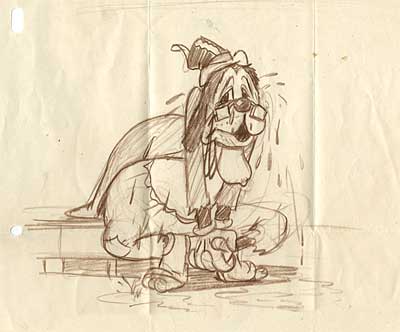
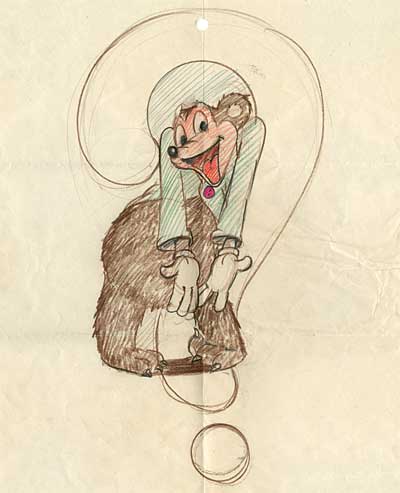
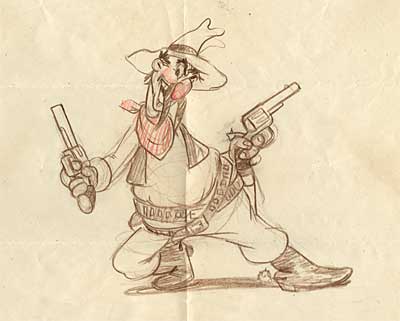
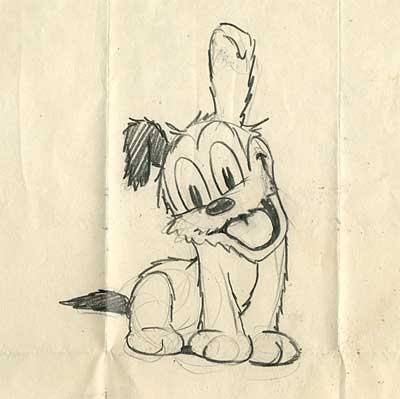
All of us at Animation Resources appreciate the Vinci’s generosity. Since this article was originally posted, Mrs. Vinci has passed away. Amir and I will never forget her kindness and generosity.
Stephen Worth
Director
Animation Resources


This posting is part of the online Encyclopedia of Cartooning under the subject heading, Animation.
THIS IS JUST THE TIP OF THE ICEBERG!
Animation Resources has been sharing treasures from the Animation Archive with its members for over a decade. Every other month, our members get access to a downloadable Reference Pack, full of information, inspiration and animation. The RefPacks consist of e-books jam packed with high resolution scans of great art, still framable animated films from around the world, documentaries, podcasts, seminars and MORE! The best part is that all of this material has been selected and curated by our Board of professionals to aid you in your self study. Our goal is to help you be a greater artist. Why wouldn’t you want to be a member of a group like that?
Membership comes in three levels. General Members get access to a bi-monthly Reference Pack as well as a Bonus RefPack from past offerings in the in-between months. We offer a discounted Student Membership for full time students and educators. And if you want to try out being a member, there is a Quarterly Membership that runs for three months.
JOIN TODAY!
https://animationresources.org/membership/levels/
FREE SAMPLES!
Not Convinced Yet? Check out this SAMPLE REFERENCE PACK! It will give you a taste of what Animation Resources members get to download every other month! That’s 560 pages of great high resolution images and nearly an hour of rare animation available to everyone to download for FREE! https://animationresources.org/join-us-sample-reference-pack/


 Animation Resources depends on your contributions to support its projects. Even if you can’t afford to join our group right now, please click the button below to donate whatever you can afford using PayPal.
Animation Resources depends on your contributions to support its projects. Even if you can’t afford to join our group right now, please click the button below to donate whatever you can afford using PayPal.









 by
by 
Posted by admin @ 12:24 pm
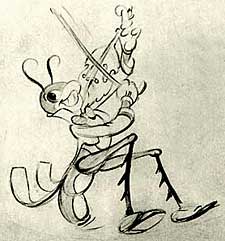
![]() Today we digitized some wonderful Disney model sheets. For more model sheets, see… Reluctant Dragon and Pinocchio Model Sheets, Two Disney Concept Artists and Mice and Duck Model Sheets.
Today we digitized some wonderful Disney model sheets. For more model sheets, see… Reluctant Dragon and Pinocchio Model Sheets, Two Disney Concept Artists and Mice and Duck Model Sheets.
![]() These original production photostatic model sheets are available for sale by Van Eaton Galleries for $50 apiece. If you decide to add any of them to your collection, tell the folks at the Van Eaton Galleries that Animation Resources referred you, and they will donate a portion of your purchase price to Animation Resources.
These original production photostatic model sheets are available for sale by Van Eaton Galleries for $50 apiece. If you decide to add any of them to your collection, tell the folks at the Van Eaton Galleries that Animation Resources referred you, and they will donate a portion of your purchase price to Animation Resources.














